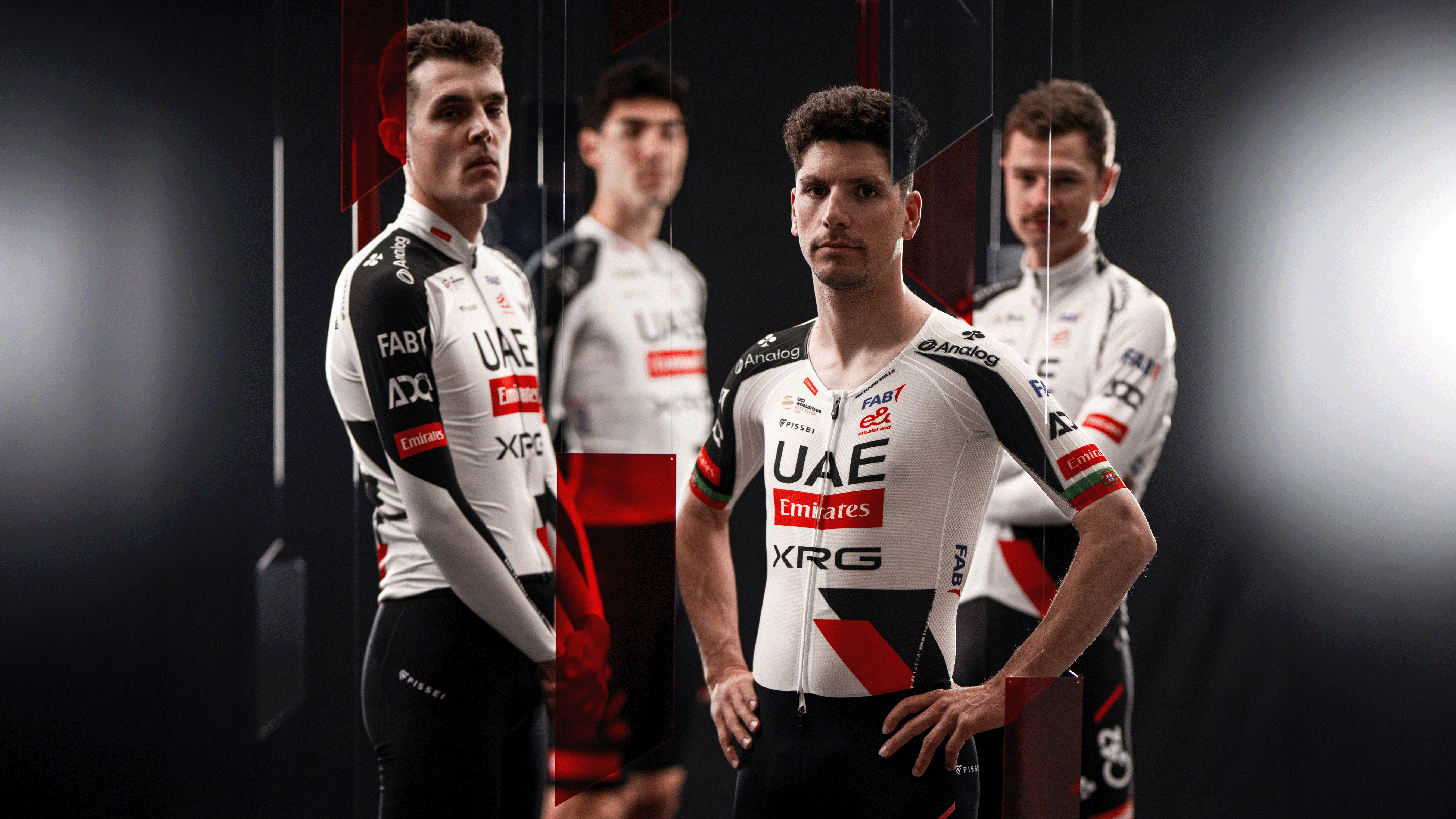Pro Bike: Carlos Sastre's Cervélo TestTeam Cervélo R5
New R5 complete with new Rotor Q-Ring chainrings and crank, too
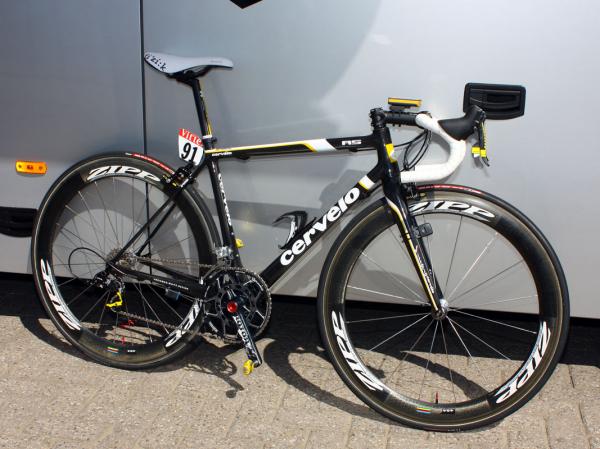
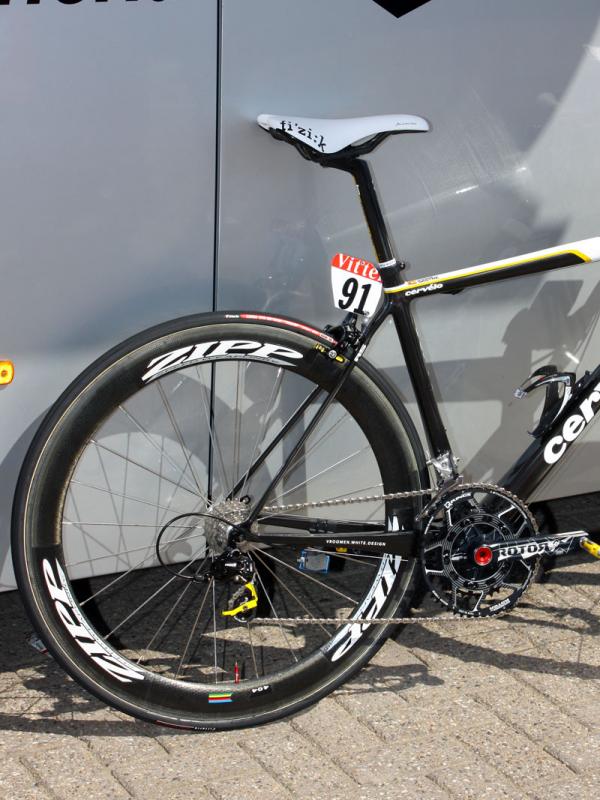
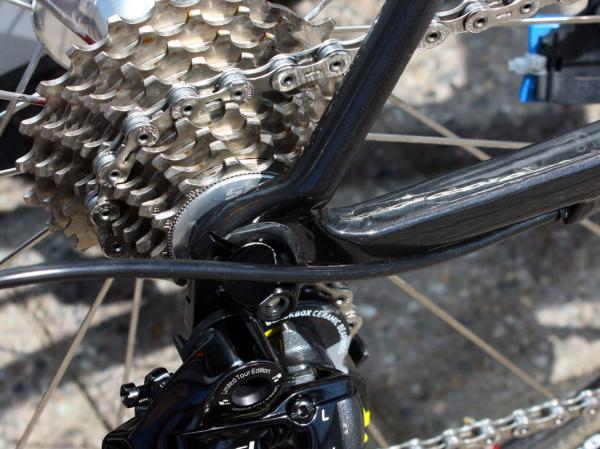
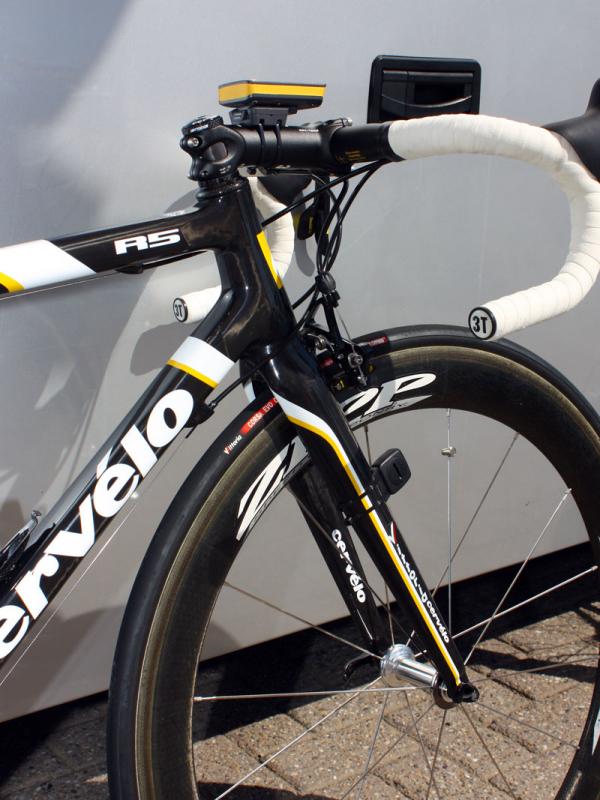
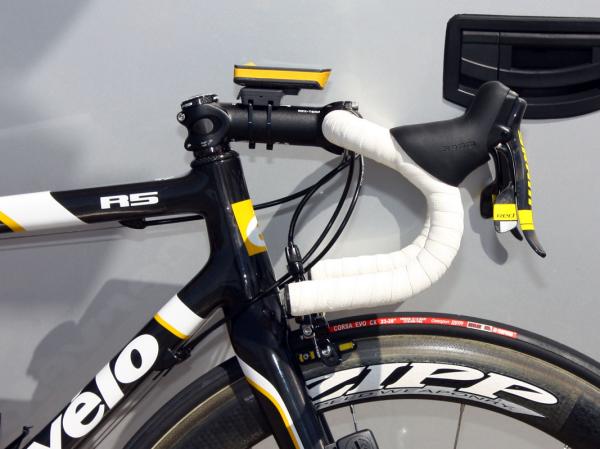
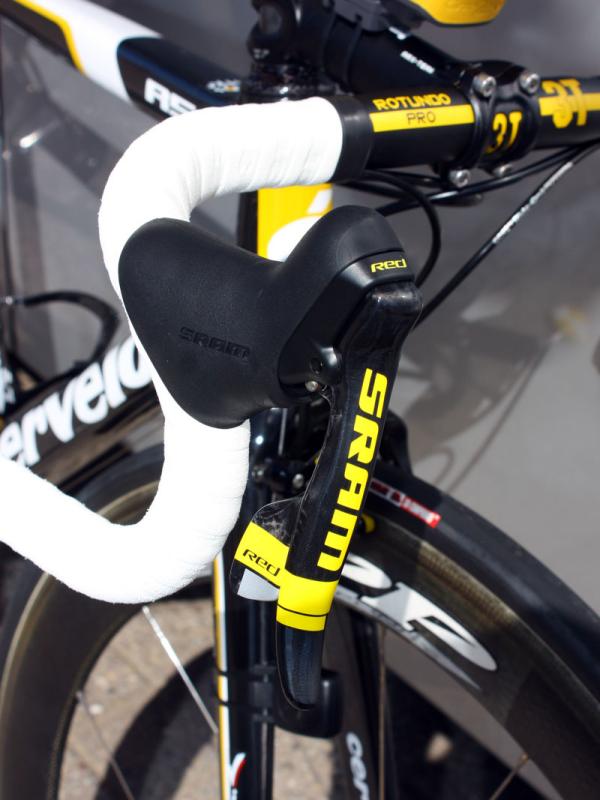
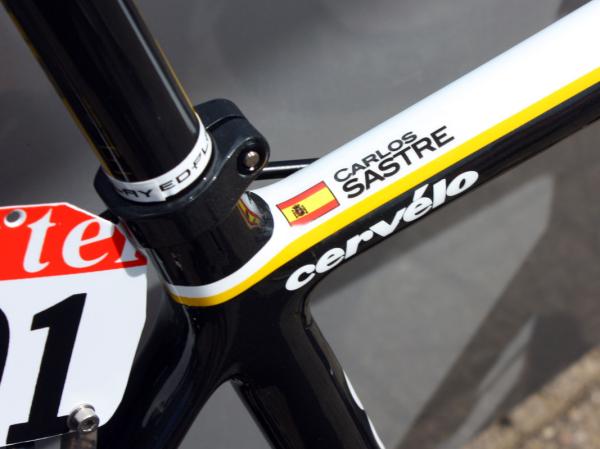
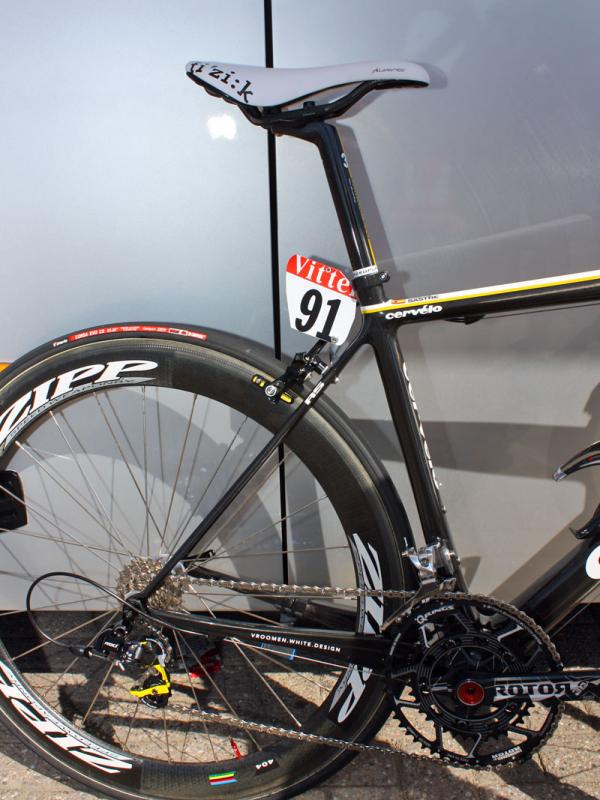
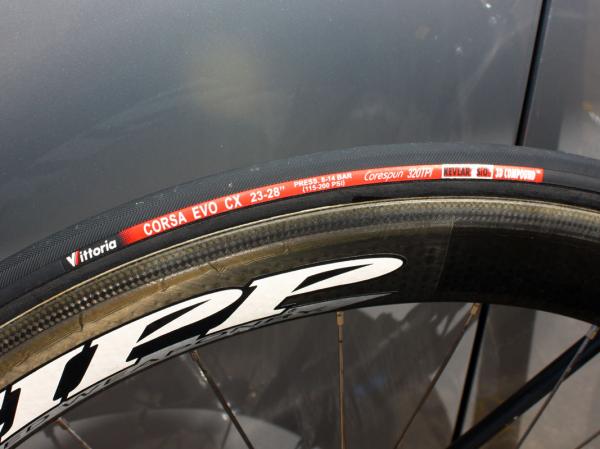
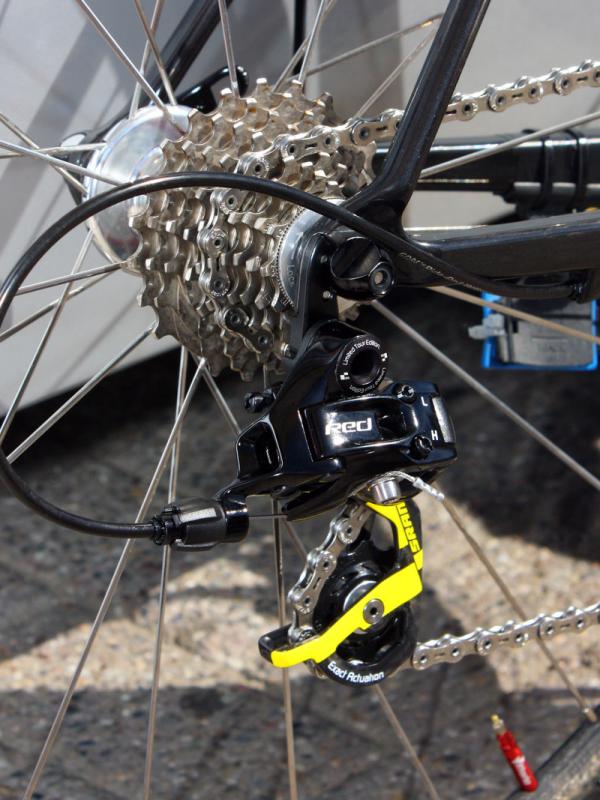
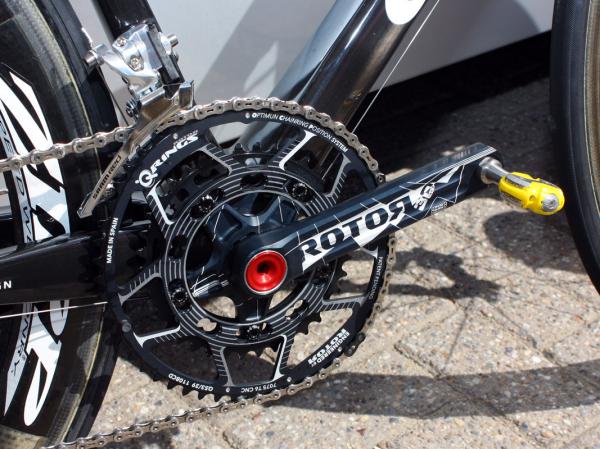
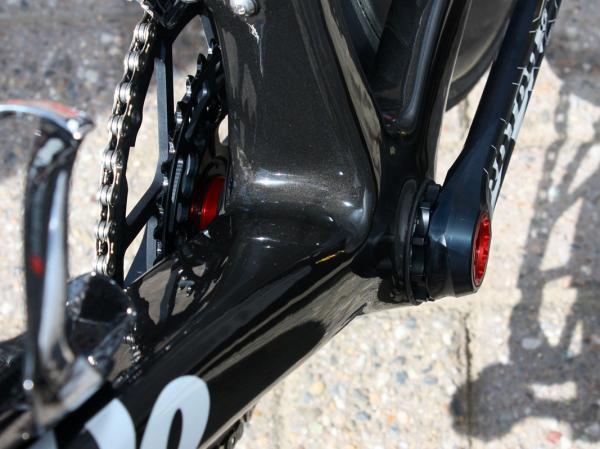
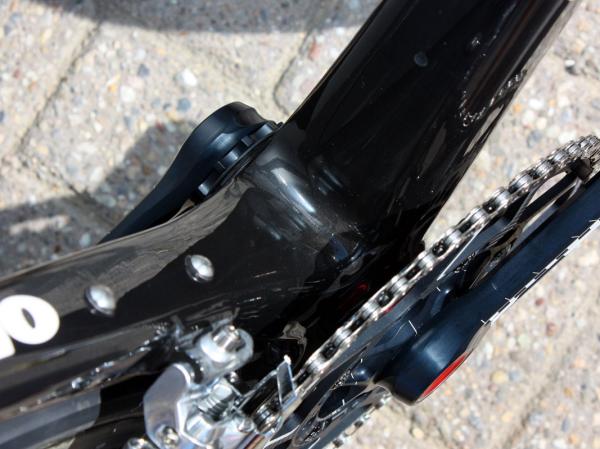
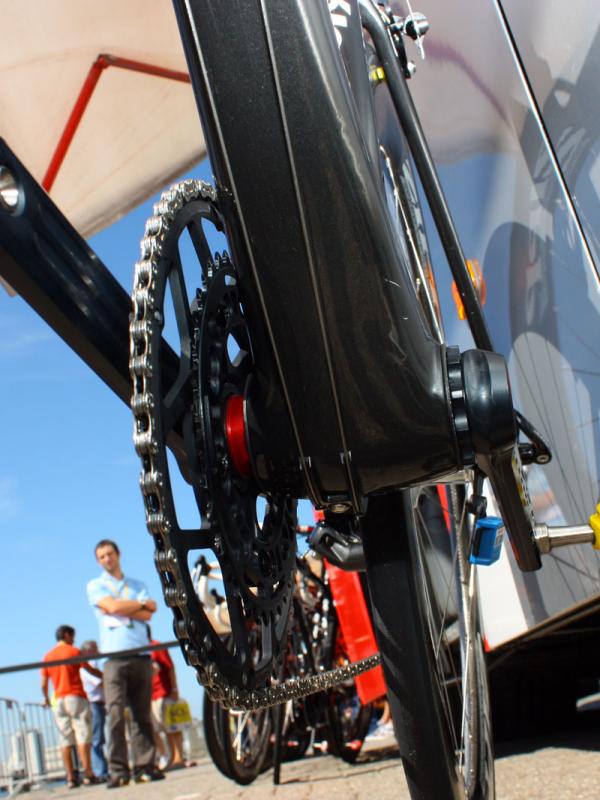
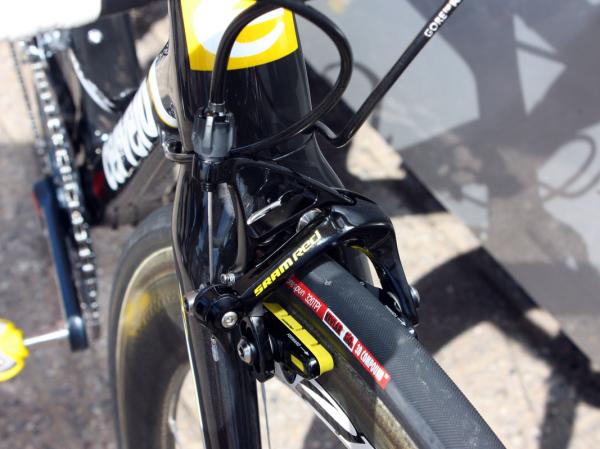
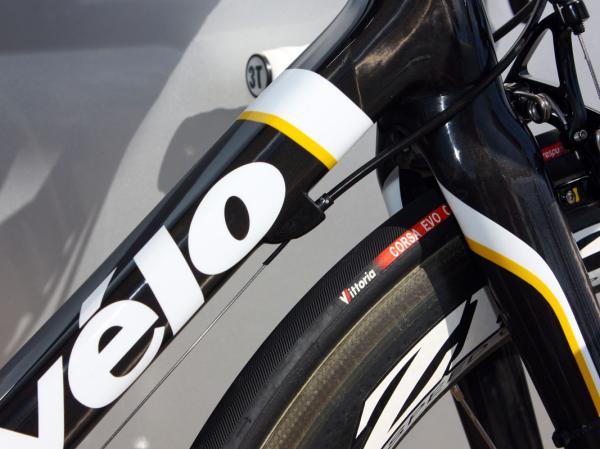
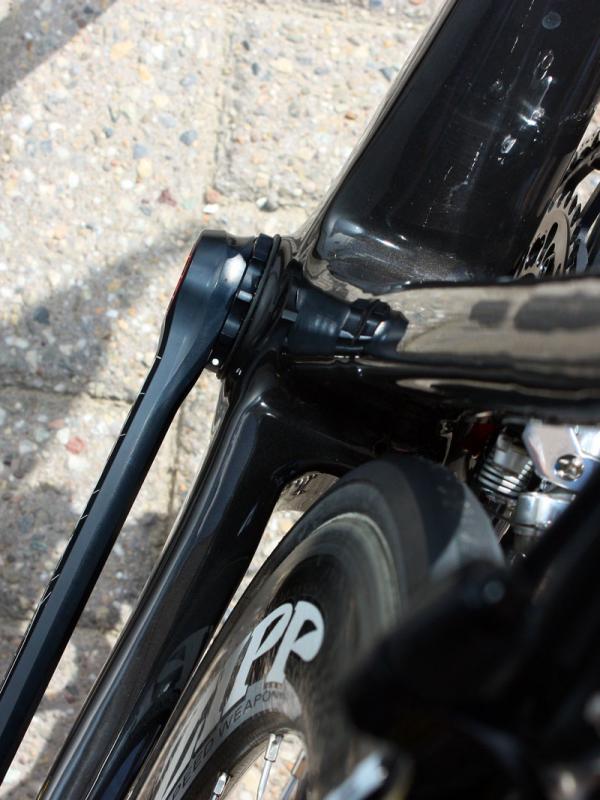
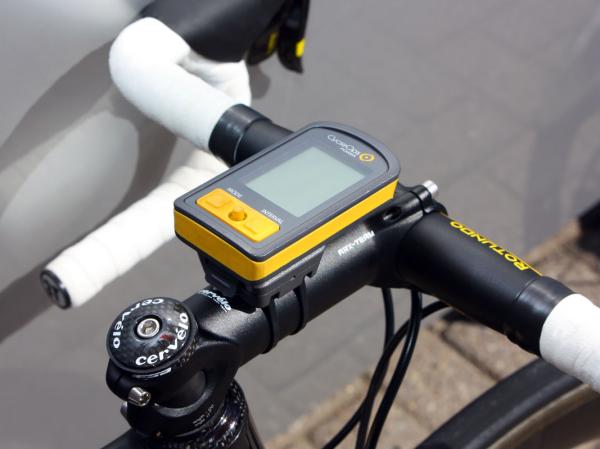
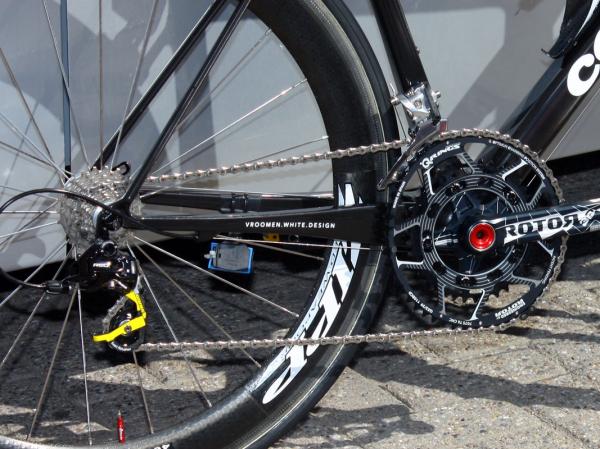
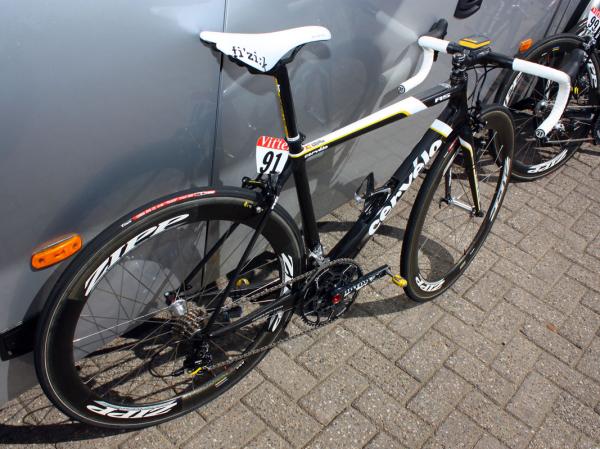
While his teammates have long since jumped on the aero road bandwagon with the slippery SLC-SL and now S3, Cervélo TestTeam captain Carlos Sastre has instead preferred to stay on his lighter and more comfortable R3-SL – a logical choice, seeing as how he's a climbing specialist and generally protected from the wind most of the time, anyway. This year's Tour de France, however, sees him on Cervélo's latest incarnation: the R5 (formerly known as Project California).
The R5 builds on the R3's proven Squoval-profile tubes, big chain stays, and tiny seat stays but it's as if Cervélo turned the volume up a few notches. Coming well down the scale, though, is the mass with a claimed weight under 700g for a 56cm R5. Key changes including a newly tapered front end and interesting new BBright bottom bracket standard.
Cervélo TestTeam race engineer Damon Rinard says that in-house testing revealed definite advantages with a tapered front end but that the commonly accepted 1 1/8"-to-1 1/2" standard was actually too rigid.
"If you go too oversized at the bottom of the fork you gain so much rigidity that the fork as a whole doesn't absorb energy so it has to be built too strong, making it too heavy and too stiff," he said.
Cervélo ultimately settled on a 'sweet spot' of 1 3/8", using a new lower headset standard that company engineer Richard Matthews developed with Cane Creek (Specialized also uses a 1 3/8" lower bearing on its Roubaix line but it's a proprietary setup). The matching all-carbon fork is still light but noticeably stiffer and more precise handling than the R3's according to Rinard. In addition, the lower bearing seat is molded directly into the fork crown, thus eliminating a redundant part and also lending a straighter path for the carbon fibers in that area.
The BBright concept is even more interesting. Rinard says that the company has long seen advantages with the BB30 system with its stiffer and lighter 30mm diameter but never quite understood why there was so much unsupported spindle on the non-driveside. Instead, BBright
adheres to the standard on the driveside but pushes the non-driveside bearing out by 11mm, thus filling in the dead space and providing better axle support but without affecting pedal stance width.
In addition, Rinard says it's fairly easy for crank manufacturers to adapt existing BB30 crank designs to BBright as only the spindles need to be modified and standard BB30 bearings can be used (the R5 uses PressFit 30 cups).
The latest race content, interviews, features, reviews and expert buying guides, direct to your inbox!
Combining the bigger head tube and BBright shell together left Cervélo with a lot more real estate to play with and they look to have used it well. The asymmetrical down tube is bigger up front and now extra-wide down below, the seat tube is similarly offset and broadened, and the non-driveside chain stay has nearly doubled in breadth.
In addition, while the driveside stay is still offset at the dropout to clear the cogs and chain, the non-driveside stay comes in straight on for better structural efficiency.
Other details include newly carbon fiber dropouts, low-friction external cable routing with molded-in carbon housing stops, a carbon fiber seatpost clamp with titanium and aluminum hardware and a keyed shape to keep it from rotating on the frame (the seat clamp and three seat tube slots are offset from each other for more even clamping force), and a slightly altered frame geometry.
Rinard wouldn't fully elaborate on the geometry changes but did confirm a slightly longer head tube on some – but not all – sizes. Moreover, his comments to us suggest more stable high-speed handling, too.
All that extra room could have been used to make an extra-stout frame but Rinard says Cervélo still hasn't yet decided exactly how it wants to best exploit it.
"The added section in the tubes joining the bottom bracket gives an excess of stiffness we can play with," he said. "We haven't finalized just how much of that bonus we want to keep as a stiffness increase and how much we want to cash in as further weight decreases."
Comfort looks to be rather well retained regardless, however, as the seat stays are even slightly slimmer than the ones on the R3 but the chain stays – though taller up at the bottom bracket – now taper far more aggressively in height.
Cervelo takes advantage of the BBright standard's dimensions by widening the down tube, too.
Team mechanics build up Sastre's bike with a mix of bits from sponsors SRAM, Zipp, 3T, Rotor, fi'zi:k, Speedplay, Vittoria and CycleOps. Standout items include SRAM's special Red LTE group with yellow highlights, Zipp 404 carbon tubular wheels, a yellow-accented 3T carbon seatpost, bar and stem, and Rotor's revised elliptical Q-Rings with new tooth profiling for smoother downshifts.
Rotor's new 3D crank is worth some extra attention as it's not only compatible with the R5's BBright system but also standard BB30, PressFit-30, and even threaded 68mm-wide shells with a special bottom bracket. Details are limited pending the crank's official release at Eurobike but it's a fair assumption to expect a longer machined section on the spindle to accept multiple bearing positions and a bit of extra length on the driveside to accommodate an externally located cup.
With all of these lightweight parts bolted to what is one of the lightest frames out there, one can't help but wonder how the sum total meets the UCI-mandated minimum weight of 6.8kg – and that'd be a fair question since it doesn't, at least not without a little help.
"To stay legal, TestTeam mechanics add as much useful weight as Carlos can stand in component selection, then slip a solid steel bar into the seat tube to top it off," Rinard told us. "Carlos insists we put it over, not at, the limit so there's no chance it could be measured under."
By that account we'd guess Sastre's bike is around 6.9kg (15.2lb) or so but when the R5 ultimately becomes available to the public, deep-pocketed consumers will undoubtedly be able to build it up much, much lighter.
Complete bike specifications:
Time constraints ahead of stage one meant we were unable to get measurements for Sastre's R5.
